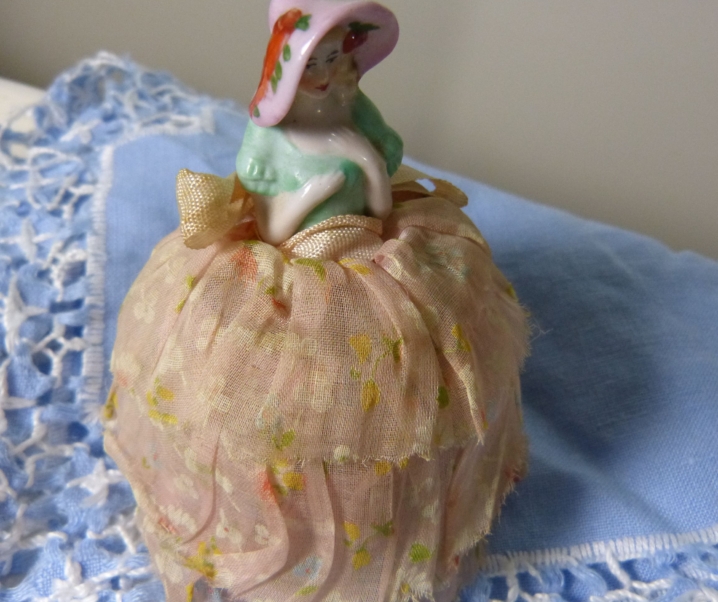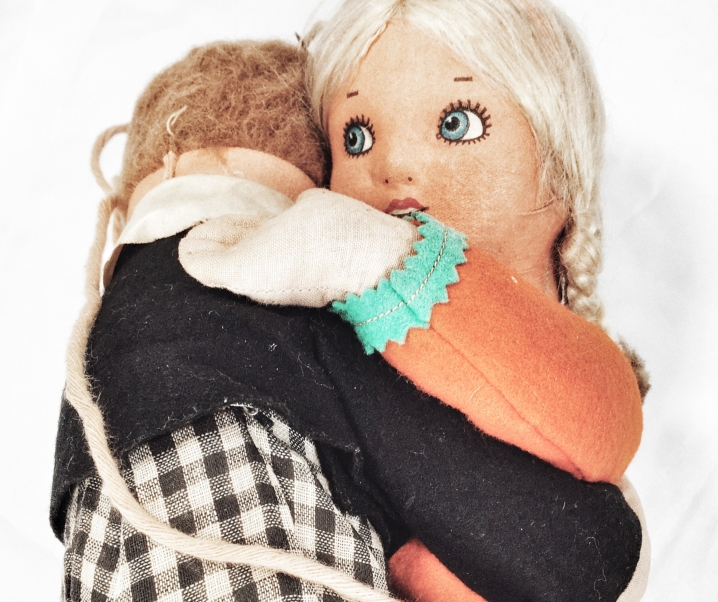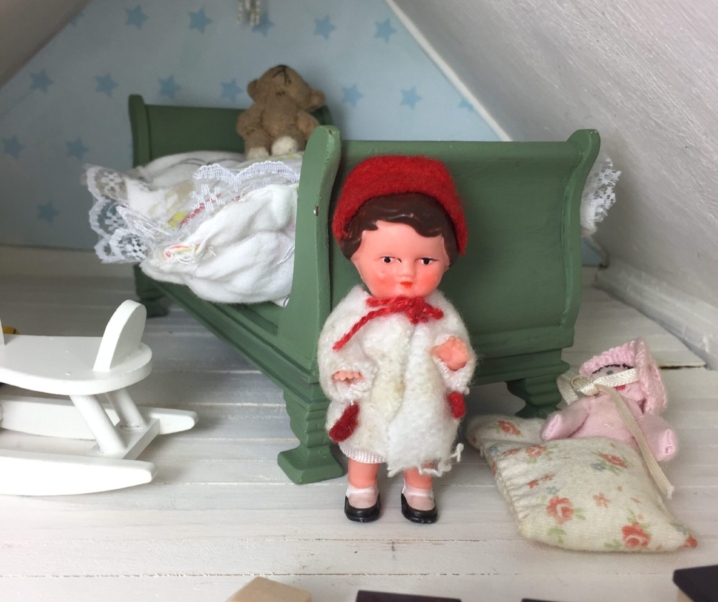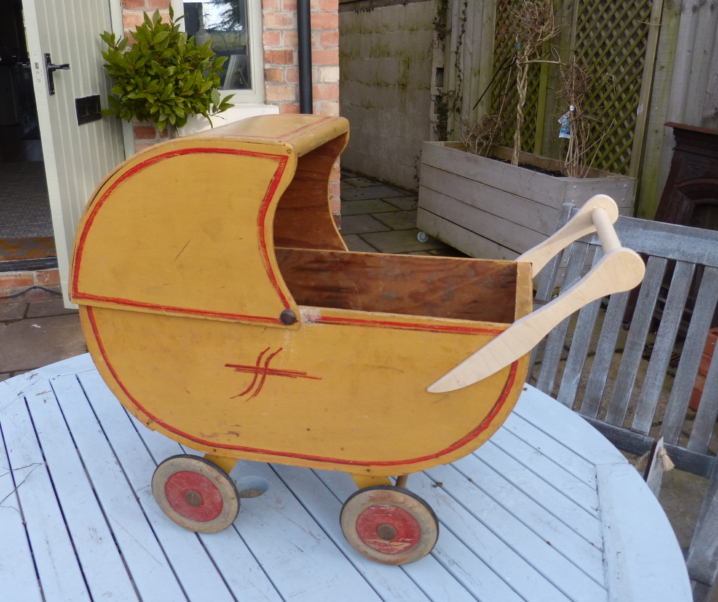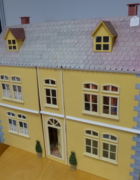There are several traps you can fall into when you start collecting vintage toys and other ephemera (not junk you understand). Paying too much, not inspecting for damage, mistaking a new model for an old one etc. One of the bear-pit traps is assuming faded, aged ‘patina’ is genuine age and not just dirt.

When I saw this little doll on a flea market stall with some nasty plastic figures my heart started to do a little pitter patter. She had a sort of rustic charm and come-and-get-me smile of someone who knows she is better than the rest of the tat on the stall.

“How much?” I asked the stall-holder holding up a collection of dolls so as not to alert her to my ‘find’.

“Oh, just £2 for most things in the box. Oh, but not that one…she’s special.”
Ah, special. My obvious interest in the little doll had tipped off the dealer. I handed over a wedge of cash without so much of a negotiation. I was certain I was holding a naive (handmade) doll from the Victorian era (with those Hollywood eyelashes?) and that I’d soon be taking a Mediterranean cruise on the profits from her re-sale.
Alas, my pride in finding a valuable antique at a flea market was short-lived. A quick internet search soon dispelled most of my hopes, wishes and dreams.
My little wooden beauty turned out to be not-very-old-at-all Polish souvenir. Doll collectors believe they were made for tourists from the 50s – the 1950s. Some people believe pre-made model dolls were sent by the manufacturer for locals to sell/paint – so its small wonder the dolls look handmade.
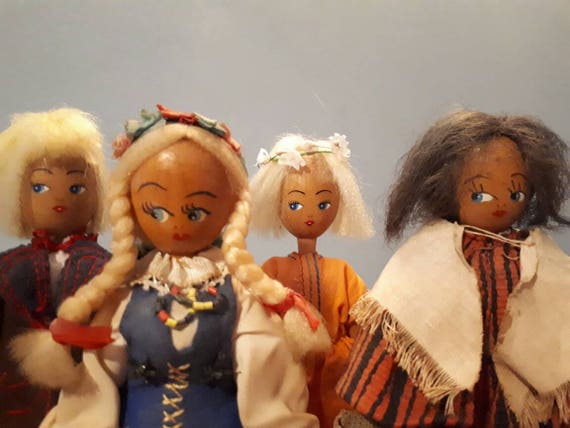
They are called ‘Joli’ dolls. They are not especially valuable – expect to pay up to £10 for a nice example. But they do make people jolly and they are very collectable.

One new collector is Hillary Lang. She is getting so enthusiastic about dolls – the Joli doll included (above) – she has taken to calling herself ‘mad doll lady’.
I finally found myself some Polish Joli dolls,” she write on her website Wee Wonderfuls.
“I’ve been wanting these for so long. Now that I’ve finally started my collection, I can form a club. I am a dorky happy doll lady.”

According to Sarah Mahon, of Girl’s Own Store (online) the Joli doll remains a bargain buy. “These vintage dolls were made in Poland, where they were produced from the 1950’s on-wards in large numbers,” she says.
“No two ever seem to have the same outfit. The faces are hand painted and so, although they are usually looking to their right, they all have a slightly different expression. This, of course, makes them wonderfully collectable.”

Which is just what Cindy Wade’s daughter started to do when her Polish grandmother gave her one of the dolls as a present.
“The hunt was on,” recalls Cindy.
“Over the years of collecting my daughter and I discovered they are made by a wooden doll cottage industry in Poland. Some wear simple outfits while others can be quite elaborate. My impression is the wooden doll was mass produced but then sent to craft people who sewed and glued outfits for them using scraps of fabric.”
When I spoke to Cindy, who runs a vintage shop called Anna Q’s Attic in Cuttingsville, Vermont, she said the dolls have since been boxed up and passed down to a grateful granddaughter.
“The dolls are not overly valuable but the hunt for them over the years with my young daughter was priceless.” she recalled.

Here’s Cindy’s tips for any would-be Jolly Joli doll collector;

“Look for cleanliness, good joints, paint that is not scratched, peeling or missing and overall appearance
Dolls usually sell in the £8 to £15 range, even less for well worn or damaged dolls and dolls that are only good for parts or in need repair. Some of the more elaborately clothed dolls or unusual character dolls can be more costly but I wouldn’t pay much more than £20 for one.
As for where to find them; these wooden Polish dolls can be found everywhere (try Etsy, flea markets, EBay and vintage shops) and in all sorts of condition.
Happy collecting!”
To view Cindy Ward’s collection of Joli dolls visit her blog Anna Q’s Attik





